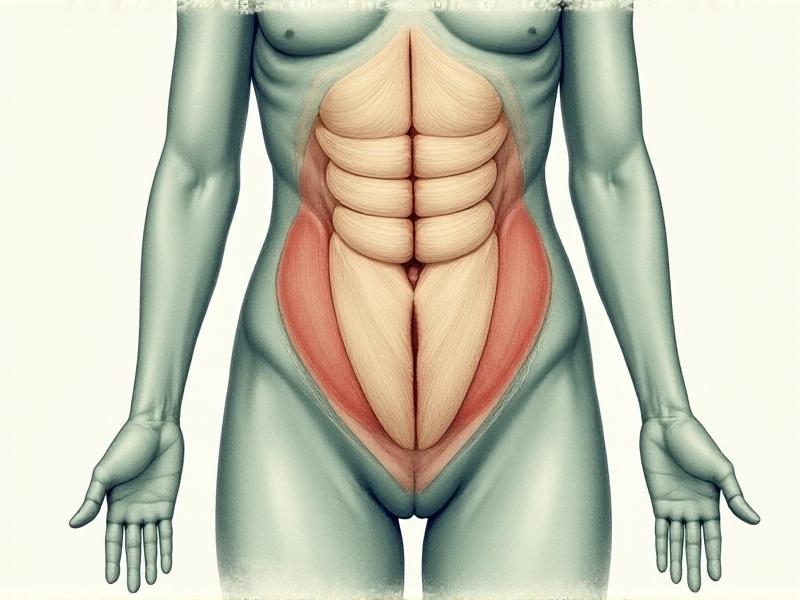Diastasis Recti Healing: 5 Safe Crunch Alternatives
Understanding Diastasis Recti: What You Need to Know
Diastasis Recti is a condition where the rectus abdominis muscles separate, often occurring during pregnancy or due to excessive abdominal strain. This separation can lead to a protruding belly, lower back pain, and weakened core strength. Understanding the mechanics of this condition is crucial for effective healing. The gap between the muscles can vary in width and depth, and while it’s common postpartum, it can also affect men and women who haven’t been pregnant. Recognizing the signs early and knowing how to approach recovery can make a significant difference in restoring core function and confidence.

Why Traditional Crunches Can Worsen Diastasis Recti
Traditional crunches and sit-ups are often go-to exercises for strengthening the core, but they can be detrimental for individuals with Diastasis Recti. These movements increase intra-abdominal pressure, pushing the separated muscles further apart and exacerbating the condition. Instead of building strength, they can lead to more pronounced bulging and discomfort. Understanding why these exercises are harmful is the first step toward finding safer alternatives that promote healing and restore core integrity without causing further damage.

Safe Core Strengthening: The Foundation of Diastasis Recti Healing
Healing Diastasis Recti requires a focus on safe core strengthening exercises that avoid excessive pressure on the abdominal wall. The goal is to engage the deep core muscles, such as the transverse abdominis, while minimizing strain on the rectus abdominis. Techniques like pelvic tilts, gentle breathing exercises, and modified planks can help rebuild core strength without worsening the separation. Building a strong foundation is essential for long-term recovery and preventing future complications.

Top 5 Safe Crunch Alternatives for Diastasis Recti Recovery
1. Heel Slides: Lie on your back with knees bent and slowly slide one heel along the floor, engaging your core without lifting your back. This low-impact movement strengthens the deep core muscles. 2. Dead Bug: Lie on your back with arms and legs in the air, then slowly lower opposite limbs while keeping your core engaged. This exercise improves coordination and core stability. 3. Modified Plank: Perform a plank on your knees, ensuring your core is engaged and your back is straight. This reduces pressure on the abdominal wall while building strength. 4. Standing Core Exercises: Try standing marches or side leg lifts to engage your core without lying down. These movements are gentle yet effective. 5. Breathing Techniques: Practice diaphragmatic breathing to activate the deep core muscles and promote healing from within. These alternatives provide a safe and effective way to rebuild core strength without risking further damage.
Incorporating Movement into Daily Life for Long-Term Healing
Healing Diastasis Recti isn’t just about structured exercises—it’s also about incorporating mindful movement into your daily routine. Simple actions like maintaining proper posture, lifting objects with your legs instead of your back, and engaging your core during everyday activities can make a significant difference. Consistency is key, and small, intentional movements can add up to big improvements over time. By integrating these practices into your lifestyle, you can support your recovery and maintain a strong, healthy core for years to come.
Seeking Professional Guidance: When to Consult a Specialist
While many individuals can successfully heal Diastasis Recti with safe exercises and lifestyle changes, some cases may require professional intervention. If you experience persistent pain, a large separation, or no improvement despite consistent effort, it’s time to consult a physical therapist or healthcare provider. They can assess your condition, provide personalized exercises, and recommend additional treatments like bracing or surgery if necessary. Seeking expert guidance ensures you’re on the right path to recovery and minimizes the risk of complications.
Empowering Yourself Through Knowledge and Action
Healing Diastasis Recti is a journey that requires patience, knowledge, and consistent effort. By understanding the condition, avoiding harmful exercises, and embracing safe alternatives, you can take control of your recovery and restore your core strength. Remember, every small step counts, and with the right approach, you can achieve lasting results. Empower yourself with the tools and information you need to heal, and don’t hesitate to seek support when necessary. Your body is capable of remarkable recovery—trust the process and celebrate your progress along the way.








